
Loading
EP 521 | AIRED 01/18/2021
Pandalus Borealis and Jordani Shrimp Market Update; It’s a Buyer’s Market
January 18th, 2021 --- This week we provide a much needed update on the Pandalus Borealis and Jordani Shrimp market as an abundance in supply is causing major market swings.
--- Coldwater Shrimp harvest from four major fisheries globally did not vary much from previous years where 2020 saw just over 211,000 tonnes produced for the global markets.
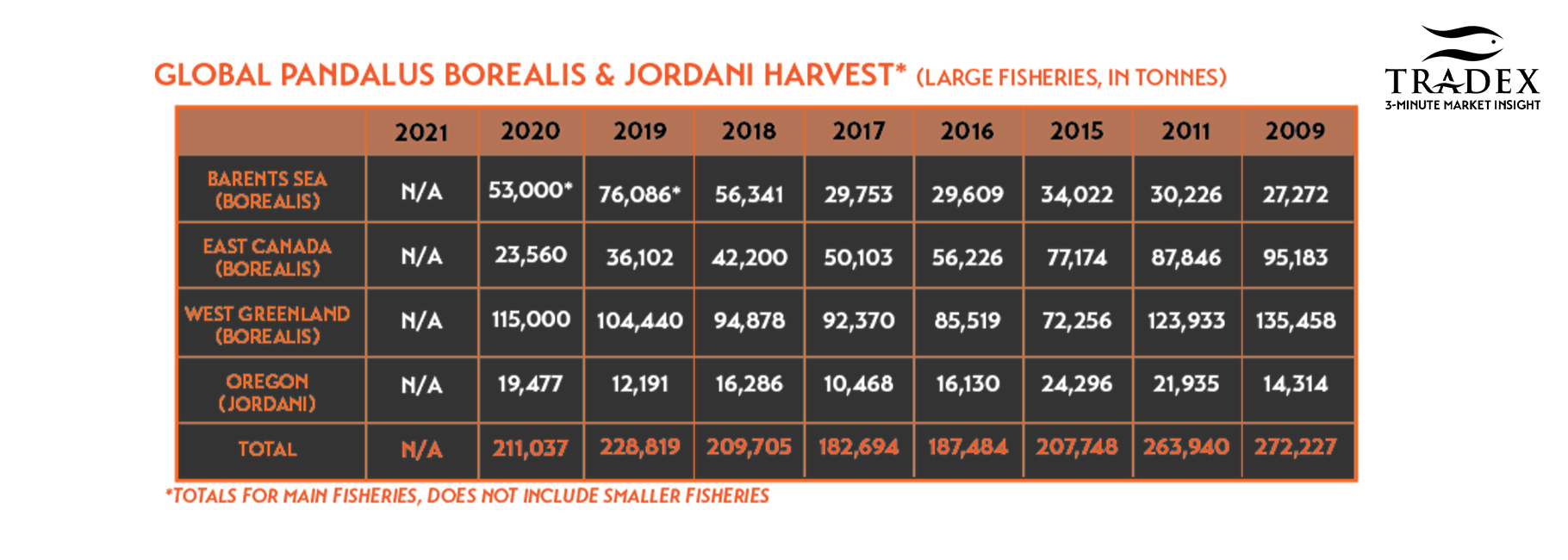
However, COVID-19 has greatly reduced the demand for Shrimp in foodservice resulting in a continued surplus of inventory.
Specifically, as demand for Coldwater Shrimp for European and North American markets has been drastically reduced, both Pandalus Borealis and Jordani producers are contending to move inventory levels similar to pre-pandemic years during a global pandemic with reduced demand.
Borealis pricing has been on a steady decline since 2019 and has continued to decline throughout the pandemic with average pricing ranging from $6.40/lb USD for 125/175 count down to $5.40/lb USD for 250/350 count.
Compare this to average pricing in 2019 of $7.10/lb USD for 125/175 count down to $6.30/lb USD for 250/350 count.
Jordani pricing has been on a steady decline for both 250/350 and 350/500 count compared to 2018 where 250/350 count were in the high $6's and 350/500 count in the low $5's.
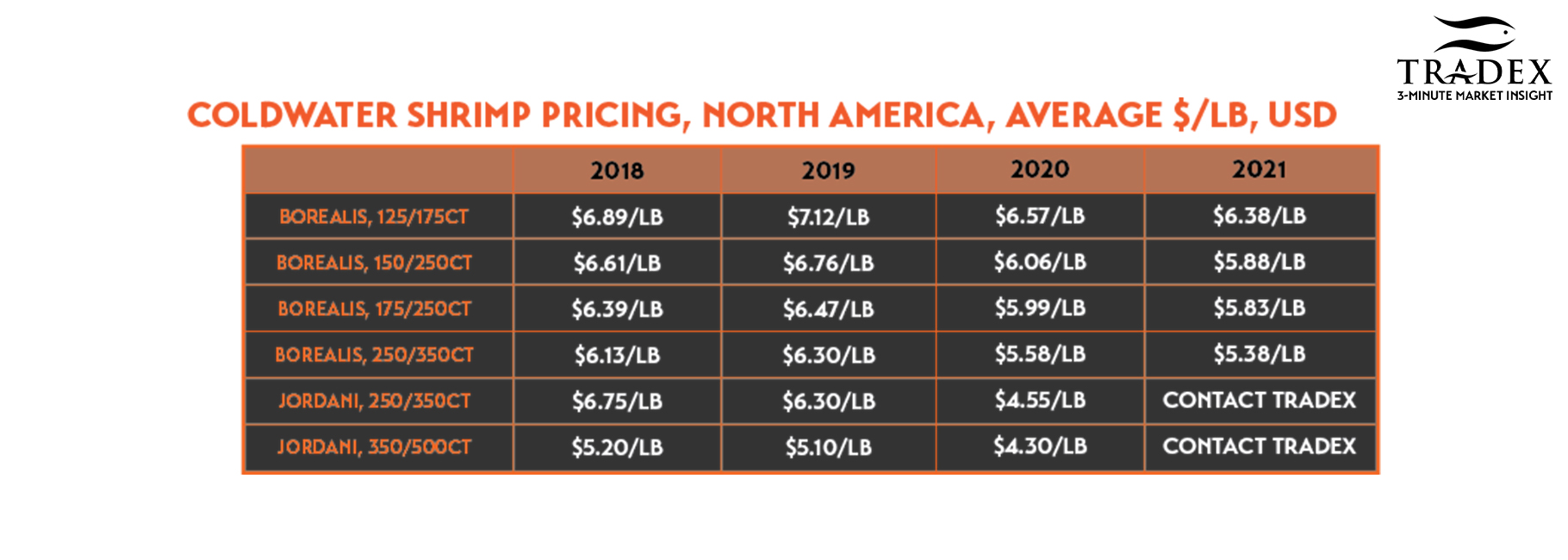
For Oregon's Jordani Pink Shrimp fishery, despite a substantially higher catch in 2020, the value of the fishery was only slightly higher than the previus year at around 22.3 million USD, compared to 2019's ex-vessel value of 19.9 million USD.
Our Recommendation will be presented at the end of this video.

Advertise Here: advertising@tradexfoods.com
--- Moving onto harvest data and forecast and based on what we know so far, we predict global Coldwater Shrimp harvest to amount to around 200,000 tonnes from the 4 major fisheries comprised of the Barents Sea, Newfoundland and Labrador Region in Eastern Canada, West Greenland, and Oregon.
For the Barents Sea, ICES (the International Council for the Exploration of the Sea) recommended a significant allowable catch increase from 70,000 tonnes for 2019 to 150,000 tonnes for 2020 and announced that catches in 2021 should be no more than 140 000 tonnes.
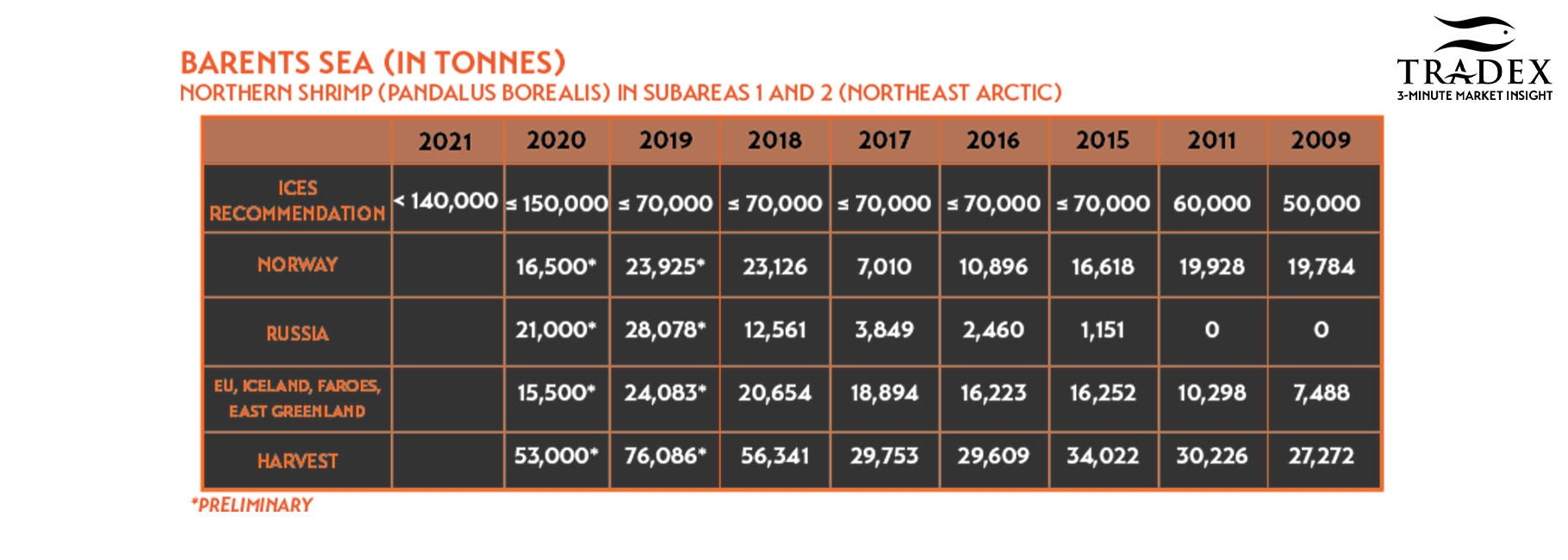
Despite advice from ICES to increase the allowable catch for 2020, preliminary data shows the season brought in 20,000 tonnes less Borealis than 2019.
We will know more about the condition of this fishery when the newest joint NAFO/ICES Pandalus Assessment Group report becomes available.
--- Moving onto Canada and the Pandalus borealis fishery in Newfoundland and Labrador Region saw a harvest of 23,000 tonnes setting another downward trend marker for the fishery where 2019 saw 36,000 and 2018 saw 42,000 tonnes.
The West Greenland borealis fishery which shares a small portion of TAC with Canada saw the harvest increase slightly to 115,000 tonnes up from 104,000 in 2019 and 94,000 tonnes in 2018.
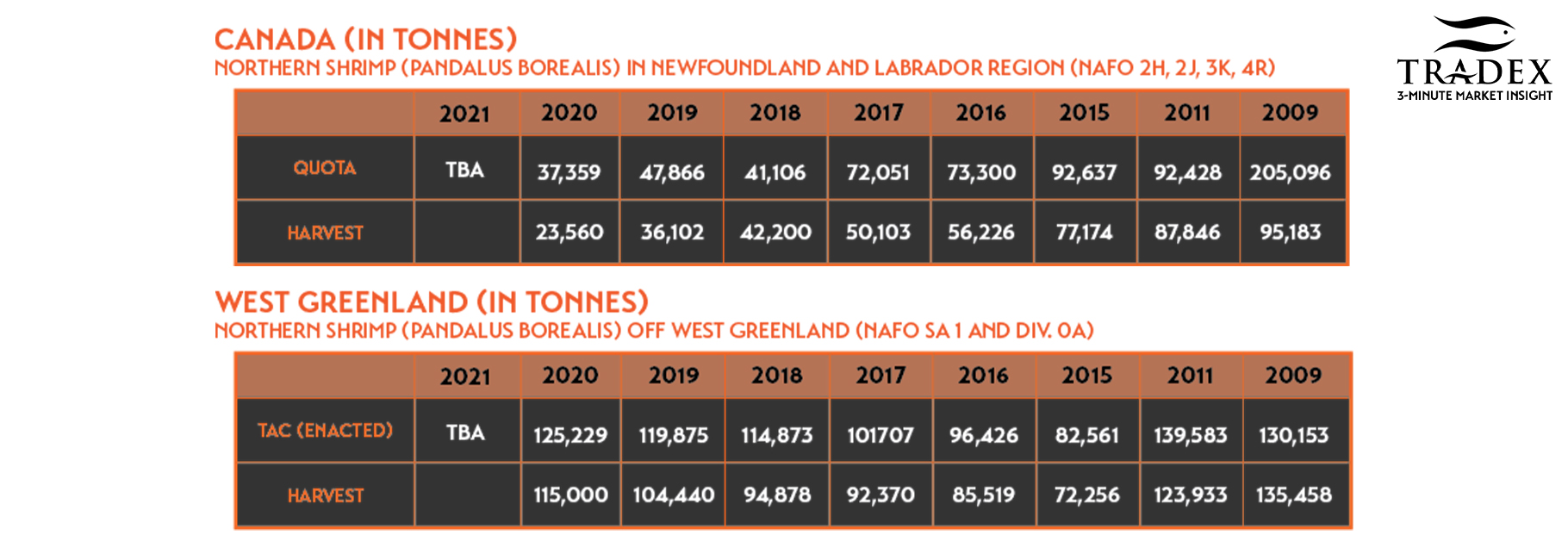
As reported by us in 2019, the scientific outlook for East Coast Pandalus borealis Shrimp was expected to continue to decline.
As this can be seen in the Canadian fishery, it is yet to be determined the outlook of the fishery in West Greenland.
We will know more once ICES publishes their 2020 report on West Greenland and Oceans and Fisheries Canada publishes their reports for the Newfoundland and Labrador fishery.
Representatives from Fisheries and Oceans Canada acknowledged that assessments of the fishery will happen in February and new quotas for the 2021/2022 fishery will likely be set in March of 2021.
--- Lastly, just a quick recap and forecast for the Pandalus jordani Oregon Pink Shrimp fishery.
Preliminary harvest totals came in at 42.9 million pounds for the 2020 Oregon fishery which is the highest catch since 2015 and was exceptionally higher than 2019's 26.9 million pounds and 2018's 35 million pounds.
The Oregon Department of Fish and Wildlife was unable to comment on the forecast for the 2021 fishery however aligning Oceanic Nino indexes with harvest data might suggest that 2021 will see a slightly lower harvest as the International Research Institute for Climate and Society is forecasting for La Nina to ENSO-neutral conditions into the spring of 2021.
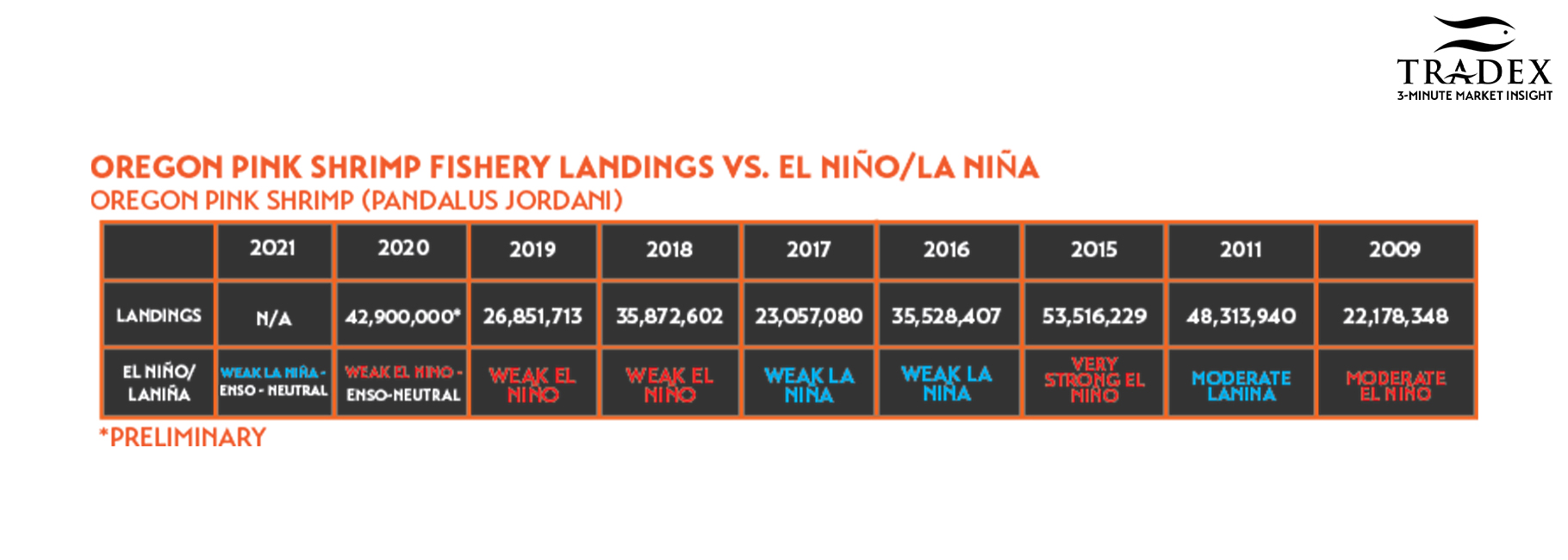
--- Our recommendation is to lock in a retail contract program that can drive volume to assist in moving the surplus of stock available while taking advantage of lower pricing.
This is a great opportunity to build this category in supermarkets (and in what limited foodservice remains) and turn your customers on to these fabulous shrimp varieties and build a new and expanded customer base for years to come.
--- If you are not already, be sure to subscribe to our 3-Minute Market Insight using the signup form below to keep tuned-in to all upcoming market insights.


